Blog
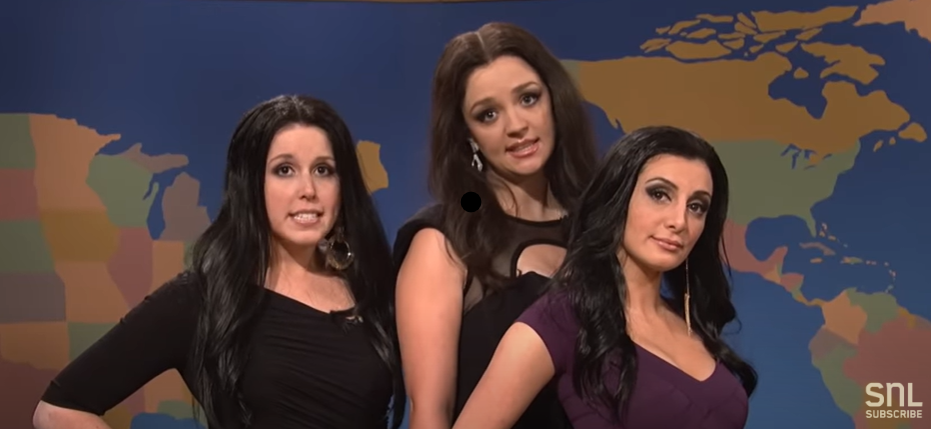
By Allison Smith
•
22 Apr, 2024
I was recently watching a compilation of SNL videos, and I was instantly taken with the mastery and expert mimicry of the female cast members doing a parody of the Kardashians on their “Weekend Update” segment. It was incredibly detailed and nuanced, and right on-the-nose. (My favorite line: “I’m Kim, the beautiful one; I’m Courtney, the smart one; and I’m…. Chloe.” ) Of course, their wardrobe and hair were carefully selected and executed – but it was when you’re hearing their voices for the first time, that you realize how directly they “nailed” that impersonation. The Kardashians are unmistakable in their whiny, nasal, constantly imploring tone, with some vocal fry and upspeak thrown in for good measure. They sound like little squeaky dolls – and that’s what their empire was built on. So, it’s no surprise that people like the Kardashians (“Kardashi-i?”) serve as some powerful cultural influences in speech. They model success, they epitomize mastery and control over social media, and they ooze money. Who wouldn’t want to emulate or channel even a little bit of that? The problem gets back to authenticity, and the major handicap to powerful speech which I’ve addressed in detail in other posts: any time you take on a persona that isn’t yours, that’s an affectation – and that’s a problem. You’re not speaking from a genuine place if you’re imitating someone else, or even subconsciously taking on someone else’s cadence. But why them? The Kardashian sound indicates affluence, and an aloof regard for the world; we just don’t care and we indicate our overall boredom with a rhythmic drone meant to signal others in Young Rich America. But there are so many other strong, confident models to want to emulate – if you have to. Strong speakers like Viola Davis, Laura Linney, and Zooey Deschanel come to mind. Michelle Obama. America Ferrera. Jennifer Lawrence. Paula Zahn. Dana Bash – or even Catelyn Collins – the age of the Kardashians, but a well-spoken, intelligent newswoman in her own right, and free of any distracting vocal affectation. There are so many powerful, influential female speakers who are not only rich in content, but they are also immensely powerful speakers and in great control of their vocal instruments. They display strength, assuredness, confidence, and do not depict a caricature of femaleness; they are owning their power. And that’s a good model for your speech. A female making themselves smaller, younger, and more submissive is taking several quantum steps back – not just for themselves, but for women in general. I’m all about speaking from a place of authenticity, and only expressing yourself in a way that is native and natural to you. I’m against imitating anyone; but if you’re looking to others for inspiration, there are much better models than the short-lived celebrity trend of our day. Look to strong, powerful influences to inspire – but not inform – your own speech patterns.

By Allison Smith
•
25 Mar, 2024
I listen to a lot of podcasts. Or, at least, I *try* to. I “audition” a lot of podcasts to keep me entertained on my trips back and forth to yoga, or driving around doing errands, and it’s astounding how many of them have the first few seconds listened to, and then I stop and move onto something else. (I’m reminded of an ad agent years ago telling me the story about him auditioning voices for a radio spot while driving out to his cabin in BC. He’d listen to the first five seconds of a demo, and if it didn’t work for him, he’d eject the cassette tape and throw it out of his sunroof. The thought of people’s beloved – and belabored over -- voiceover demo tapes littering the Trans Canada Highway still bothers me to this day.) The point was: if he wasn’t “grabbed” by a demo in the first few seconds, he moved along. As so do many of us when we start to listen to a podcast. If it doesn’t grab us right away; if there’s something odd about the podcaster’s voice – we move on. Such is the case when I try to find a new podcast I can glom onto. It’s a combination of subject matter that interests me (especially for the long-term, if there are multiple seasons of the podcast), good research on the topic, and a thorough dive into the subject matter. (I can usually tell when a podcaster searches Wikipedia and calls that “research”.) But most of the time, it’s the voice. If it’s hosted by someone who isn’t comfortable or experienced in front of the mic; by someone who doesn’t understand basic mic skills and vocal hygiene, or who hasn’t consulted with an equipment expert to advise on the technical setup – that a hard pass for me. (Would you start any business venture without first consulting an expert about how to do it correctly?) Here’s a list of basics that those pondering getting into podcasting should consider before embarking on this significant venture. Are you even the person to do this? Everyone wants to host a podcast, because you are interested enough in the subject matter to make it into a “thing”. But thing objectively for a second: are you going to honor the subject matter and really give it the polish and impact it deserves? Or is it best to outsource the voicing to a V/o pro who knows the technicalities of the equipment *and also* has the performance experience to breathe life into the podcast? Have you talked to technical people? Let’s say you decide to voice it – great. Do you know which mics do what? Which mics you sound best on? Have you asked an audio professional about basic microphone skills? Is your recording environment a dead, quiet space, or will you be fighting with ambient noise? The technicalities are important to get sorted out early, and revisited often. Do you love the subject? Show us. Here’s where things go sideways for me. I was listening to a true crime podcast, delivered by a host who spoke in a deadpan monotone. And this was suspenseful, intriguing, and somewhat dark material. Read in a flat line. Just getting the words out and no thought at all about the *meaning* of words he was saying. The impact they could have. He was reading off a page, and it showed. If you truly love the subject – by all means, script out the episodes. But know the material well enough that you would be able to scrap the script and just tell the story. Tell the listener why *you care* about the story. Why *they* should care. All that comes naturally when you yourself are getting into the material, and you’re really thinking about the subject. To grab me, a podcast must be authentic. Genuine. A journey. Too many of them are delivered by podcasters with sloppy technique and an almost distant stance from the material. Make sure your podcast is inviting, retains their interest, and tells a story.

By Allison Smith
•
22 Feb, 2024
I will admit it: when I gave my first presentation at Astricon (the formerly-great yearly conference of the Asterisk Open Source PBX phone system), I was a nervous wreck. Even though I was a bit of a celebrity in that community (being the voice of the phone system that these developers have been working with for years) and was only talking about what I knew (how to voice phone prompts effectively and well), I spoke in a thin, reedy voice and rabbited through a 40-minute presentation in about 15 minutes. The nerves I felt up there on the stage was indescribable. What if they don’t like me? What if they don’t believe me? What if they see through me…? I think we’re all subject to imposter syndrome, and a large part of the nervousness we feel when doing any kind of public speaking is as a direct result of feeling like we’ll be questioned. Doubted. Discredited. Then, something amazing happened. I worked with a coach who reminded me about a couple of things that I knew inherently. The first was: I know what I’m talking about. When I’m asked to speak at a conference, they’ve done so because I have become expert at the layout and production of IVR prompts for phone systems. That is my arcane, niche-y speciality, and I can say – now without hesitation – that this is my area. If I were asked to speak about animal husbandry or how to clean out a carburetor, I’d be in trouble. When you are speaking to those in your industry, or at a meeting of a group of enthusiasts – or at any venue where you know what you’re talking about, realize one important truism: You’re there for a reason. You know your stuff. Here's the second epiphany: they want to drink in whatever it is you have to offer. If you are speaking in front of a group already in your industry, they are receptive to whatever you have to say, and are looking forward to your fresh perspective. You’re not assembling a group to read aloud from a manual; your presentation is imparting information that they care about from your vantage point – and they are receptive and open to what you’re offering. They’re there willingly, and they don’t want to have their time wasted any more than you wish to waste their time. Think about what you bring to the party. What *is* your twist on the topic? What makes your talk unique? It *is* unique. Enjoy what you’re offering. The third and final piece that was missing from my previous, early presentations was a lack of true preparation. Make sure that you prepare; and know that you can never over-prepare. Know your slide presentation well. Know it enough to wing it should the technical gremlins take over (and they do, on occasion.) Practice your presentation on its feet – complete with walking around as you anticipate doing on stage. I find it helps to establish eye contact where you imagine it would be. When you get to the venue, see if you can scope out the room where you’ll be speaking. If you can do a dry run in the room – all the better. Presenting online has unique and considerable challenges – as someone who had their computer go through a forced update *during* a high-stakes remote presentation I was doing, I urge everyone to either go through an update the day before your presentation, or disable the forced update option in your settings. Make sure you have the right power cords and all other peripherals you’ll need. And insist on a technical rehearsal – possibly a few times.
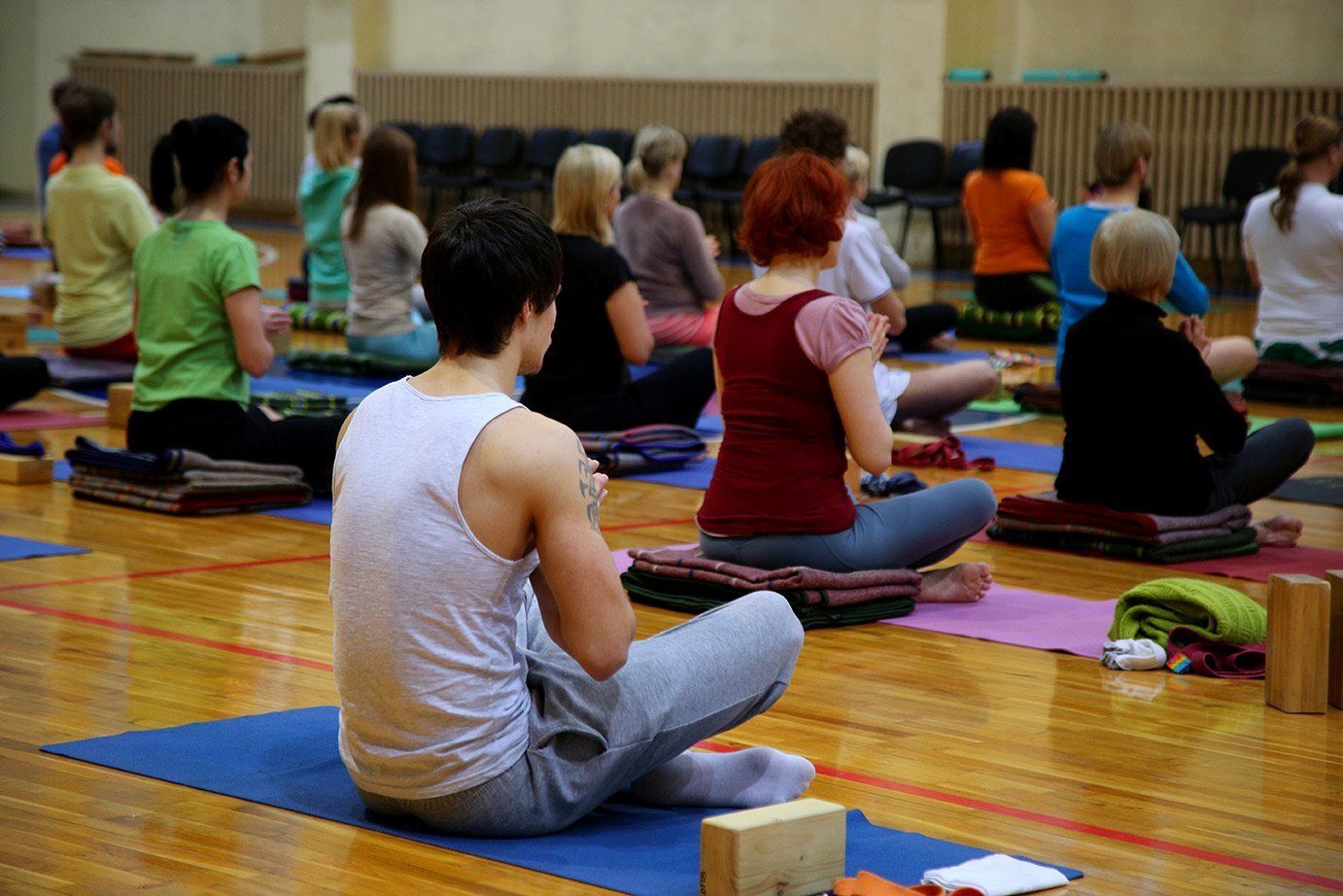
By Allison Smith
•
13 Jan, 2024
I became aware – during a recent yoga class I was attending – of a student practicing behind me who spent the first twenty minutes of the class in child’s pose. In every pose the rest of the class was doing which allowed me to look behind me at her, I noticed she was adopting yet another “tamasic” pose (at one point, she was resting with her legs up the wall, and towards the end of the class, she was curled up facing the wall in a full-on fetal position. Yoga teachers have mentioned to me that it’s actually a little disconcerting when a student completely abandons their lesson and does their own thing. Yes, it’s our own practice; but one comes to class to benefit from the teacher’s instruction and to go on the journey collectively with the rest of the class. At first I thought: “Why bother to even come to class? Why not do it from home?” And then it occurred to me. I have no idea what kind of day she’s had. Maybe she’s jetlagged. Traumatized by a breakup. Maybe she just got fired. Having grand-mal cramps. And yoga class is her “go-to” refuge to feel better. I simply don’t know what her journey was to get her here. And I shouldn’t judge her. That point was brought home a few years ago, when the studio at which I practice was burglarized (sadly, not the first or last time this happened.) My gut reaction was disbelief (what do we have to steal? Some nice candleholders with remote-control votives? Some yoga mats?) and then anger at our sacred space being desecrated. A yoga teacher at the desk had a different perspective on the robbery: “They must be having a really difficult time to break into a business, especially with so little to take.” She wasn’t wrong. It was a completely fresh way to look at it. Yes, a crime had been committed, and the studio was on the hook for yet another pane of glass to be replaced on their door. But we may never know the circumstances which led up to that moment to the glass shattering. The fact that we can’t imagine doing that crime just reinforces that someone else is going through something we can’t even comprehend. For the student who seems to be “striving” and even showing off a little to the rest of the class about how intermediate they are: there might be something deeply psychologically rooted in them that we may never know, which causes them to see their practice as more exhibitionism and theatre than a personal practice. (Same goes for someone who may not be able to much – if any – of the poses to their fullest expression. They’re likely struggling with an injury or physical limitation which had them fully rooted to where they are.) Both scenarios deserve our compassion and openness that they’re on a journey we’re not on. We practice collectively; we arrive at the studio and lay our mats down in a (relatively) systematic way, and we embark on the same class which ends at the same time. But we’re all on a different trajectory; we’re there for different reasons, and a completely unique set of circumstances got us there.
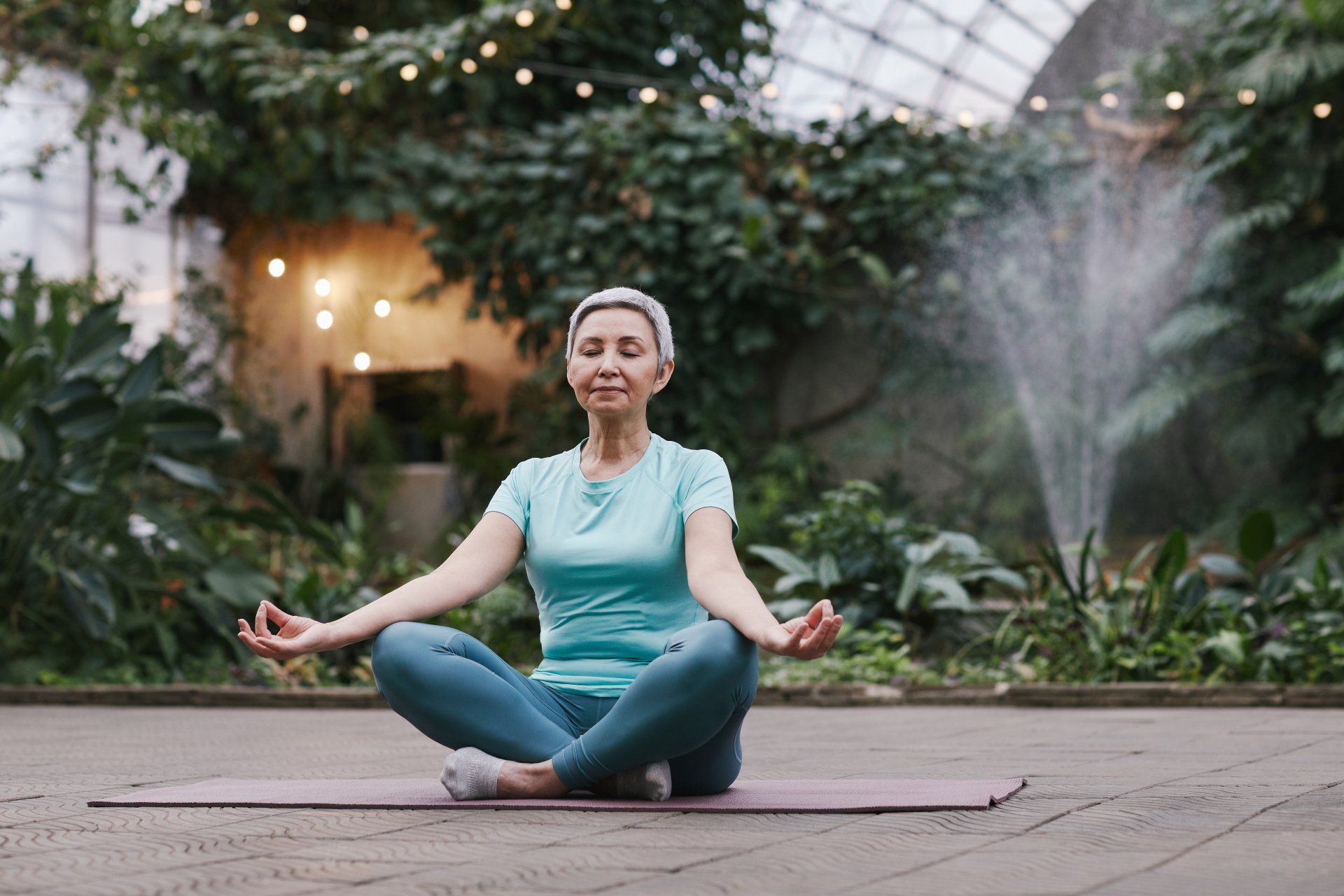
By Allison Smith
•
02 Oct, 2023
The connection is instant. When I see a “regular” at the yoga studio, and I joke: “You’re here all the time…” there’s an instant “you got me!” expression, and there’s a tacit understanding between me and my newfound friend that yes: we are here all time. (And I know you’re here all the time, because *I’m* here all the time, too. I joke about having my mail delivered to the studio.) I love seeing a wide array of people at the studio, and those who you get used to seeing are especially comforting; we’re accustomed to going to the same class, and we’re part of 75 minutes of a unifying activity. I draw a lot of comfort in seeing regulars, and when you learn their names – and learn more about them – you become more than classmates. They provide a certain familiarity that’s soothing. The trick is: despite the class setting, it really can be a very “insulating” activity. You go inward, and every class is a journey of self-exploration. You’re on your own mat, in your own little world. As it should be. But that sometimes means that you only see people around you when you’ve arrived at the studio, preparing to “submerge” into the class experience, and briefly when you “come out”, grab your stuff, slide into your shoes and head out into the night nursing your “yoga high”. So how *do* you cultivate these friendships in such a transitory, fleeting set of encounters? Take advantage of studio social events The studio where I practice will often – weather permitting – schedule outdoor classes and an impromptu snack and visit afterwards. We had one towards the end of summer this year, and it was an amazing practice, outside under massive trees gently swaying in the August breeze. We all brought food and had a great visit – which is something that we don’t often get a chance to do with our fellow students. I encourage you to take advantage of any social events at the studio you attend – even online; they can expand our sometimes-limited yoga interactions. Connect on social media It will often look for classmates on Instagram and it’s fantastic to get that glimpse into their world. You can locate others who are connected to them, and before you know it – you have another level of contact. Plan a yoga “date” The 8 PM class I attend concludes at 9:15 – a little late to grab a tea with classmates before heading home. But for earlier classes –especially weekend afternoon classes – it’s a great opportunity to suggest that a few of you convene at a nearby coffee place (or wine bar!) to debrief after class, and find out more about your fellow classmates. A group of us from the studio met for dinners on non-yoga nights, and it was an amazing chance to explore further into what makes other people tick, and to see other sides to their personalities, apart from that dedicated to yoga, hard-working-on-the-mat yogi.
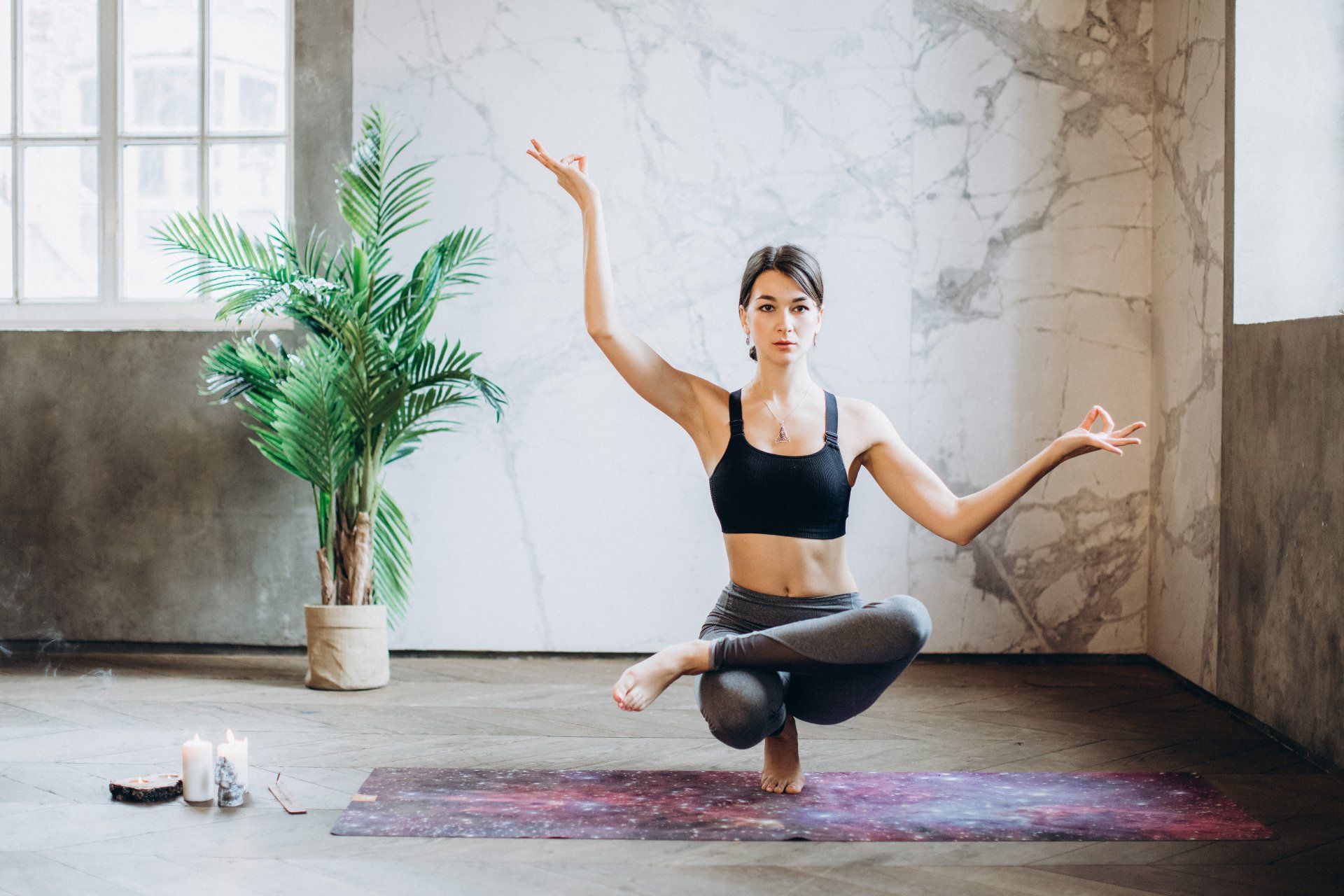
By Allison Smith
•
01 Sep, 2023
A friend and fellow yogi stayed after class one night and asked our instructor a very significant and important question – one which took our instructor slightly aback and made him pause before answering. She asked something to effect of: “I’ve been practicing yoga for years. Shouldn’t I be better at it…?” I’ve often wondered about that. Instead of feeling great pride in having practiced yoga for over twenty years, I occasionally feel a little apologetic when people ask how long I’ve been practicing. As if I should be much “better” at it. Yoga is not a pass/fail. It’s your practice, and aside from observing basic alignment protocol and keeping an eye of safety issues, there’s really no “wrong” way to do it. Ergo: there should also be no “right” way to do it. You’re not graded, evaluated or judged; there is no expectation by anyone else about your “performance” and you, as a practitioner, should not be tied to any “result”. There’s no bar to pass. Yes, I believe that there’s a certain amount of proficiency gained by doing an activity in a repetitive way; I’m better at voicing (my main job) than I was ten years ago. I make better pizza dough than I did years ago. You refine, you focus, and you improve on anything that devote time and energy on. So why should it be any different for yoga? It follows that years of repeating the same asanas should create a rote proficiency. Except that’s not what yoga is all about. My understanding is that each yoga class is a completely new practice. What you were able to do last week (or yesterday) is not necessarily what you’re able (or even meant) to do today. You might have better balance today than you had in last Wednesday’s class. Last week, I found myself effortlessly in king pigeon where I have struggled to persuade my knees to allow it in past classes. And they may *not* necessarily allow it next week. And that’s OK. I do find a profound improvement in my overall strength. I feel more graceful and more “inhabited” in poses than I have ever felt. And the best “improvement” I’ve noticed is a greater sense of self and self-care in my practice now. Twenty years ago, I may have observed a classmate in a full Urdhva Dhanurasana and thought: “Why? We have the same anatomy. What’s so different about my body that I’m against trying that?” Now I see someone in that asana, and I say to myself: “Wow. Look at that.” (For the record, I attempted it for many years – even had private tutorials on how to do full wheel: it’s just not for me. And that’s OK.) I would urge anyone who is frustrated at their “progress” or discouraged that their poses are not what they would consider to be “textbook” or “Yoga Journal Cover-Worthy”, despite years of practice, to look instead at areas in which they *have* improved: calmness, serenity, acceptance, strength, and the physical “insurance” you may have accrued by simply staying the course, being dedicated, and seeing each class as a whole new practice. The fact that you enthusiastically look forward to class; that feeling when you really get immersed in a class and the time flies, and that sweet, sweet yoga “hangover” where you’re calm, relaxed, and settle into yet another deep, restful sleep: those are benefits which far outweigh the disjointed concept of perfection or “improvement” which we sometimes strive for.
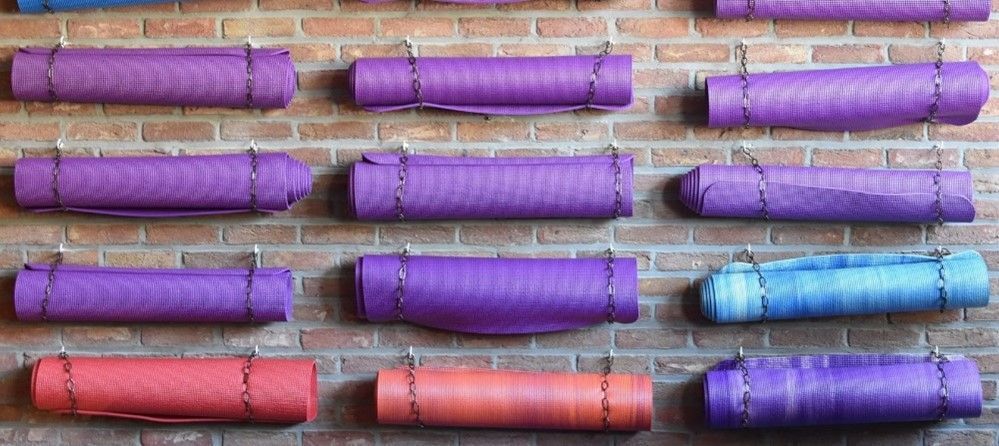
By Allison Smith
•
08 Aug, 2023
I was looking at my yoga mat the other day while I was in downward dog in class. I mean *really* looking at it. It’s a faded green 20 + year old mat made by Manduka – I remember it was a bit of a splurge but felt as though if I was serious about yoga (I was/am) I needed a mat that reflected that. Its sticky label in the corner has long-since fallen off; I’m sure there’s still embedded dirt and sand from various outdoor classes I’ve taken and vacations I’ve taken it on, and best of all, you can see foot scuff marks from years of jumping into a forward fold and sliding through countless chaturangas. Every time I do my special “origami” fold when we do frog pose (folded lengthwise in half, then each side of the mat folded into the center to provide maximum knee cushioning) I marvel at its ability to never reveal where it was creased; in a few minutes it goes back to its original fold-free shape. It's a place where I’ve sweated, where I’ve daydreamed, where my mind has wandered, and where I’ve experienced the best focus of my life. It’s where I’ve internally cursed, and yes – I’ve even cried. It’s been the staging area of poses I didn’t think I could do (and surprised myself), poses that I’ve attempted and didn’t succeed, and it’s been a calm place where I’ve just sat. And meditated. Even slept. (Often). It amazes me – when we’re really packed in should-to-shoulder for some sold-out classes – that we have room to do our practice. “How can I do this when everyone’s mat is so close to each other?” I wonder. And them I remember: I’m *always* confined to this 24” x 72” space. This is always the parameter I’m working in. With the exception of doing “Wild Thing” (where we temporarily go outside the parameter of the mat) I rarely go outside this boundary even when there *is* room. I am secure in this prescribed area – not confined. When I’m in child’s pose, my nose is buried in the mat, and smell can only be described as home. It’s years of equal measures sweat and Thieves’ Oil to clean it off (that musky, clove-y smell is sweet and familiar and quintessentially “yogic”) and all mat smells grounds and calms me. Instead of the traditional hand placement in downward dog, you can grab either side of the matt for a more “plugged in” experience. You can curl the upper right corner under to indicate that you don’t want adjustments. And at just 4.7mm, I still require knee padding on most knee-bearing poses, but it’s also surprisingly soft and insulated. I’m hard-pressed to find a more comforting, comfortable place to be. The rules are unspoken but sacrosanct: you *never* touch someone else’s mat. You never reposition it (especially if your goal is to take over that spot), and even if a mat is blocking the door after everyone’s exiting, you’re best to wait for the owner of the mat to move it out of the way. One never steps on anyone else’s mat, and if you’re doing partner work, a negotiation needs to take place as to *whose* mat is going to be used, and if there is absolute approval for the other student to be on it. Such a beautiful, rarified space is the yoga mat. Splurge, or don’t; vibe with a strong pattern or don’t (I love the stripey ones which remind me of that stretch taffy we used to eat as kids), and go with whatever color speaks to you. Just know that it’s not just a piece of athletic equipment. It’s much more symbolic, much more significant, and sublimely more personal than a kettle ball or a set of weights could ever be. If you’re as bonded to yoga as I am, your mat is your home away from home, a refuge and the epitome of a safe place to be.
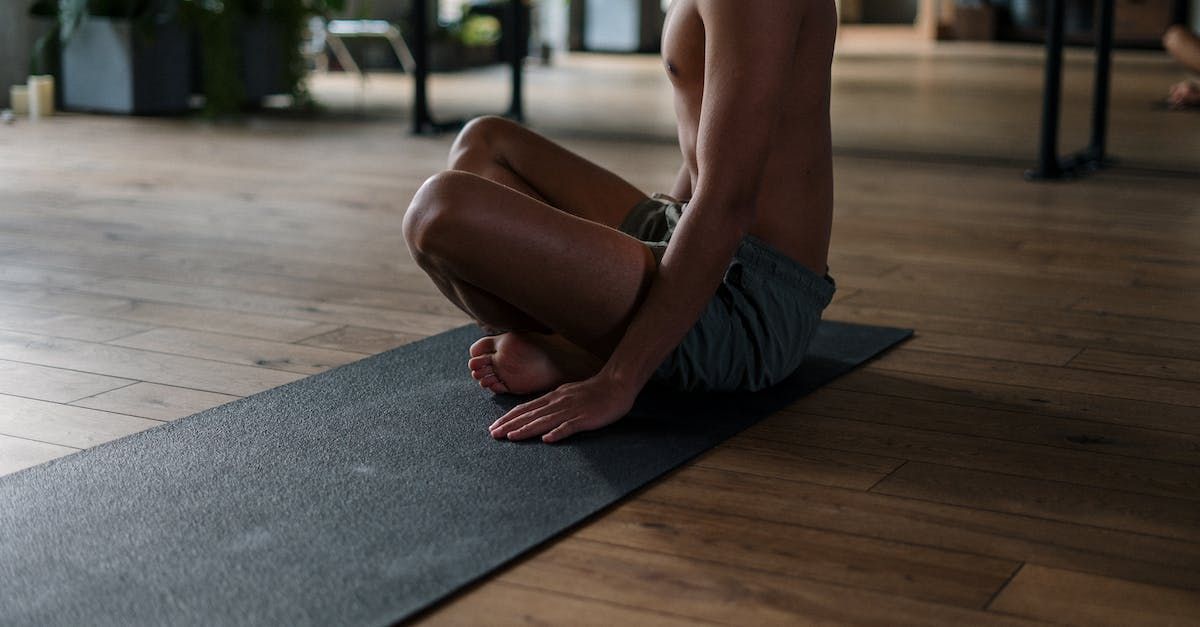
By Allison Smith
•
14 Jul, 2023
In my pursuit of broadening my Yoga and Voice Workshops, I’ve gone on a campaign of approaching new studios with the idea of them integrating my workshop into their Yoga Teacher Training – with great results. Call it good timing or just a filling of a much-needed niche, but I’ve had several studios express an interest in what I have to offer – and it’s a fantastic feeling. Who knew that a voice talent/long term yogi/speech geek would have that much to offer yoga teacher trainees about how to conduct themselves in a vocally responsible way? It was suggested by one studio that I take a few classes to get a feel for the studio and their approach to teaching before starting a dialog about incorporating my services in with theirs. At first, it felt a little “quid-pro-quo” – almost like: “Join us and then we’ll talk…” but it soon became apparent to me what a great idea it is to immerse myself into a studio in order to truly understand what they’re about before engaging in a business relationship – and sometimes that can only happen by purchasing a drop-in pass and dive in. And dive in I did. I love the unfamiliarity/familiarity aspect of going somewhere new for yoga – everything’s new and oddly similar at the same time. Shoes off (that’s universal), quiet (sacrosanct -- everywhere) and a careful observation of other student’s layout of their yoga mats should give you a good indication of mat placement protocol. (I’m always mystified when newbies at my regular studio just freestyle their matt anywhere without looking to see what the logical placement should be. It’s not that hard to parse.) Things are familiar, and yet done slightly differently depending on the studio. (“Oh! Cards to indicate touch/no touch – clever!” or “Ah….they modify sun salutations slightly -- no problem.”) You can even gauge the level of advancement from watching the practice other students – I saw that everyone was doing a bind in a side lunge and I thought: “Noted! These are accomplished yogis. I’ll still do it my own way.”) It’s the different and new instructors where I find the most exhilaration and the biggest benefit. Completely new perspectives on centuries-old poses; fresh ways of guiding me through the same poses I’ve been doing for 25+ years. This is where the greatest “boost” becomes apparent; a new instructor will cast a new light on your practice and renew your love for it. And so, I encourage you to embrace the idea of keeping roots where you practice at your “home” studio (I joke that I’m at Santosha so often and for so long that I get my mail delivered there) – but if finances allow, get even introductory memberships at other studios, and explore what else is out there. That beautiful calm, familiar feeling you get from your regular studio is an amazing sensation not to be traded with anything; but there’s real value I shaking things up and taking your practice to other studios – to be inspired by other practitioners in a new community, to absorb everything a new space can bring you, and to get a fresh perspective – from different instructors – to help grow and develop your practice.
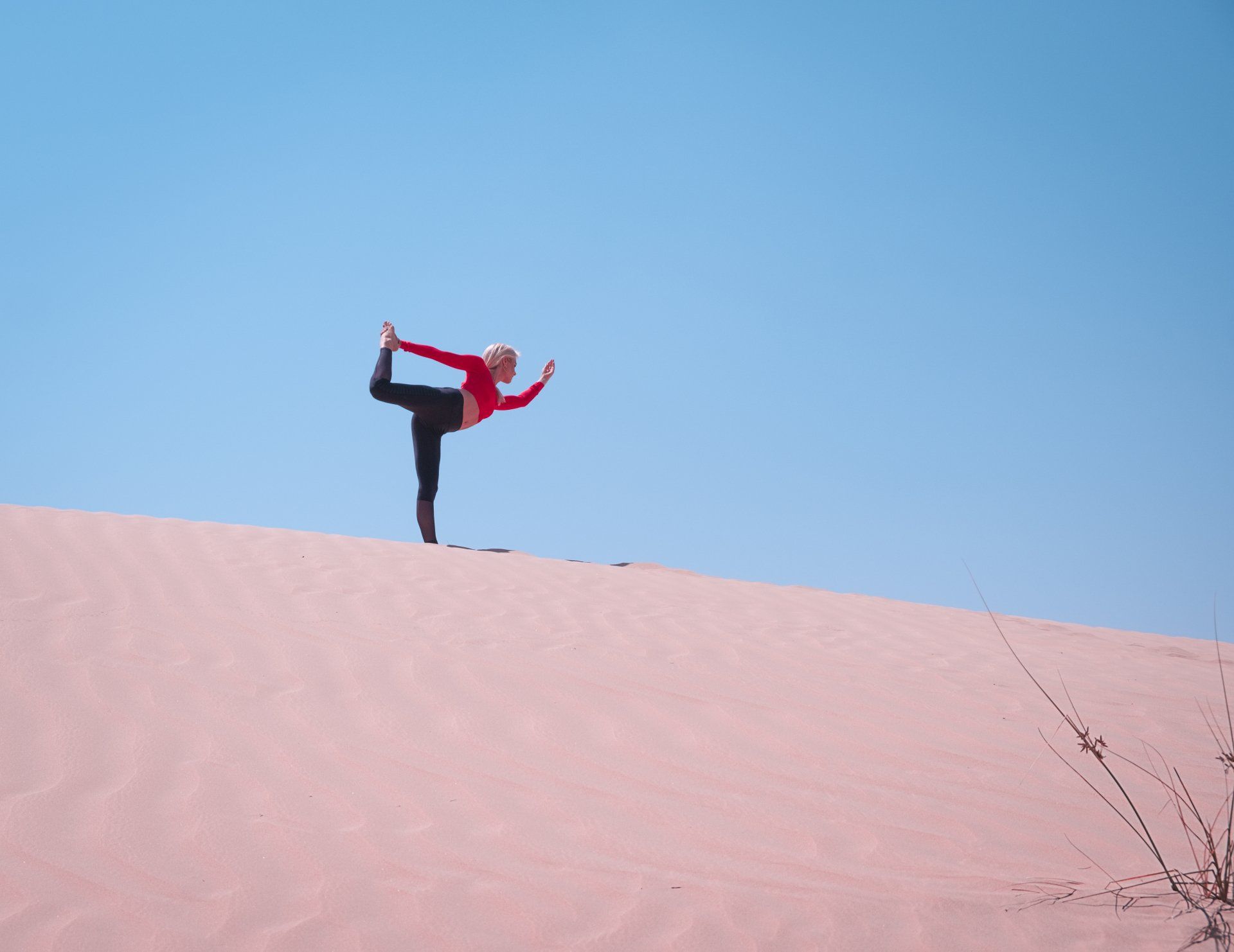
By Allison Smith
•
29 May, 2023
If you’ve followed this blog or my pages on social media, you’re going to guess that my answer to this titular question is “ Pretty Darned Important. ” My life’s work is about speaking well; I’ve enjoyed a pretty large career as a telephony-focused voice talent, and the clarity and accuracy of the way I approach my vocal work has allowed me to have a great career with legacy clients and a huge feeling of satisfaction. This side-business I have of vocal coaching allows me to combine passions – yoga and speech – and enables me to raise awareness amongst speakers in general about the importance of having an awareness of what your voice is doing and how it impacts others. In traditional yoga teacher training, there’s usually some coverage of using the correct phraseology – and what terms and words should be avoided ( how many ways can you say “rear end” without saying “bum”...? ) – but very little emphasis is placed on *how* to speak to a class of yoga students. That’s always struck me as strange because it’s not a visual medium. Unless you’re demoing a pose, your students are not *looking* at you. They’re *listening* to you. Your voice is the main conduit for information from you to your students. And if there is anything even remotely “off” about your voice – be it the overuse of a word or set of words, small speech “tics” which have worked its way into your speech, or even issues with your actual “tone” – this can cause a myriad of issue for your students, specifically: Distance and Disconnection I’ve always thought that the “perfect” yoga teacher’s voice is a whisper – not literal – but a small, personal commentary that is situated behind my left ear, and guides me through the poses in a somewhat “subliminal” way. In the best classes, I’m not even aware that someone’s talking to me. Instead, they’re guiding me. I feel very connected to the instructor through that experience. What causes a distance is when their speech gets in the way. It becomes a distraction; an obstacle. Less Intense Practice You know that deep place we go when we practice? It’s definitely less deep and less intense if we’re busy counting how many times the teachers said “Um”. Or couldn’t think of anything except how many times the instructor said: “OK, guys.” Or that they may have ended every sentence with a question sound, making it sound as though they don’t really trust what they, themselves, are saying. Vocal affectations can lessen our experience on the mat -- and that’s a pretty big “miss”. If you are running or spearheading any kind of Yoga Teacher Training, think about ways in which to integrate speech awareness into your offerings. Speech is an essential tool for yoga teacher trainees to cultivate and hone – and the sooner they start giving awareness to the vocal scape they create, the more ingrained it will be.
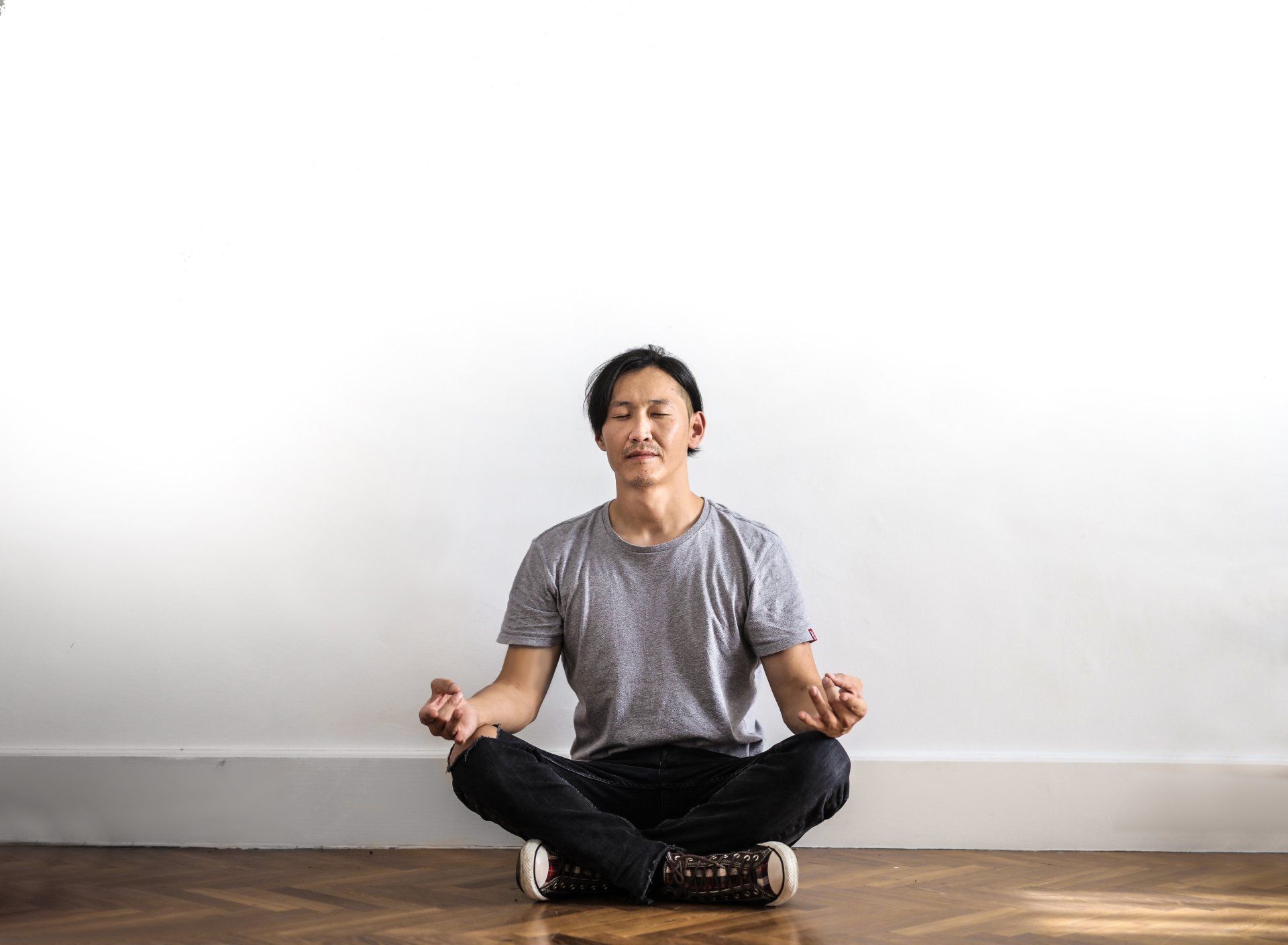
By Allison Smith
•
04 May, 2023
Awhile back, I wrote about how I “fell into” meditation by just sitting quietly, and just focusing on my breath. Fifteen minutes passed without me knowing where it went, and I said to my calmer, refreshed self: “You did it!” The imagery which worked for me in that moment was that I was floating – not unlike an aircraft – through clouds. It was a slow, controlled gliding, where there was no fear about falling, and there was a sense that I could go anywhere and soar at any altitude. In subsequent meditations, I have imagined floating – not walking – through places I know, even places as mundane as a grocery store. I glide past the pastas, the frozen perogies, and the neatly arranged bagels. Something seems ethereal about that ability to float and not have to perambulate as usual. This imagery, for whatever reason, makes me feel light. Unencumbered. And in the context of meditation, it allows we to just….drift. Online, there’s much advice about *how* to meditate and a great deal of emphasis is put on posture, positioning, finding a quiet place, setting a timer, and setting an intention or mantra. Some even recommend staring at a fixed object – such as a candle flame – as a way of narrowing your focus. Of course, it’s almost impossible for anyone to advise as to what specifically to *think* about. Only you know what to do to put yourself in a calm state, and that might be very different than what someone else does to relax. For me, I got tripped up with the posture. I found it difficult to “comply” with the recommended posture that many sources suggest in order to meditate effectively: cross-legged, or heroes pose. Cross-legged has been off the menu for me for quite awhile, but I found that to sit in heroes pose for an extended period of time – even with blocks and bolsters -- I experienced stress and anxiety about tingly, numbing legs which was absolutely not conducive to drifting away. I discovered that I am most effective at meditating sitting in a relaxed way with a strong posture. Not worrying about legs falling asleep. A straight-backed chair, or even sitting on the floor on a cushion, legs bent, with my back up against a wall or the bed. I even found it possible to meditate leaning forward in an airport waiting area seat or a doctor’s office waiting room. (One of my coaching clients said that she meditates lying on her stomach and has done so, draped on a park bench, prompting some stares.) As to what to focus on: that is such a personal preference, and such a deeply individualized choice, that it would be folly to make recommendations. I can only comment on what works for me. Other than the “gliding” paradigm, I really like visualizing a warm, white, glowing light that originates right around my solar plexus. It kind of like my “pilot light”, and I envision it glowing brighter on an inhale, and slightly dissipating on the exhale. Pulsing brighter and less brighter. Once that pattern is established, I envision it leaving my body, and floating over people I love. People in my life who I know need assistance and warmth. This ball encircles them and emanates its glow all over them. This may be too much “thinking” during a meditation; regardless, I find that these positive images of sending light to others as soothing and fulfilling and allows me to access a drifting yet oddly focused area of my brain. Whatever imagery you choose; whatever posture you take and which imagery allows you to drift off into a meditative state is highly personal, and only you can decide which works for you.
